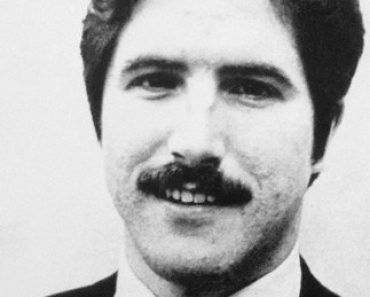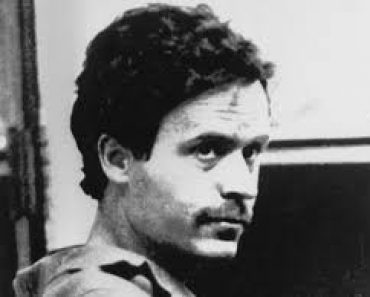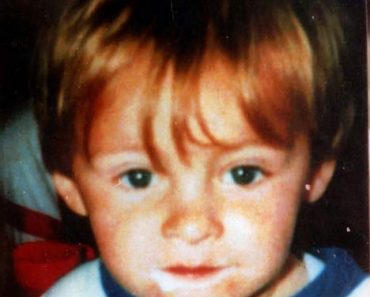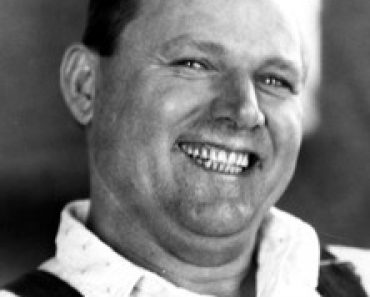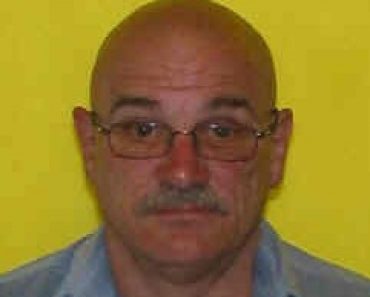William MacDonald | Serial Killer

William MacDonald
Born: 06-17-1924
The Mutilator
Australian Serial Killer
Crime Spree: 1961–1962
Death: 05-12-2015
Sydney, the early 1960’s. Australia’s largest city was under siege. A serial killer was on the loose. A homicidal maniac was luring his victims into dark places, violently stabbing them dozens of times about the head and neck with a long bladed knife and then mutilating their bodies in the most unimaginable manner.
Investigating police had no trouble in linking the murders to the same unknown psychopath, now dubbed “the Mutilator.” The warped killer’s crimes were easily recognized. His victims were always derelicts. All had been violently stabbed to death in a public place.
And, in classic serial killer fashion, their assassin had left his gruesome calling card…all of his victims had had their genitals removed!
Searching For A Barbarian
But catching the ‘Mutilator’ would prove to be no easy task. The fiend was as elusive as he was barbaric and when police finally got their man it was only a freak incident which became known world-wide as ‘The Case of the Walking Corpse’ that brought him to justice.
And instead of apprehending a monster with blood lust in his eyes and the disposition of a caged beast, police were astonished to find that the most barbaric serial killer in Australia’s history was not remotely what they, or the general public, had imagined.
The Making of a Monster
The serial killer who would become known as the Mutilator was born Allan Ginsberg, the middle of three children, in Liverpool, England, in 1924. He proved to be an unusual child prone to taking long walks at night by himself and on many occasions his mother had to call the police to go and search for him. He never sought company and remained friendless all of his life. Psychiatrists diagnosed the young Ginsberg as being schizophrenic.
In 1943, at the age of 19 Allan joined the army and was transferred to the Lancashire Fusiliers where he was raped in an air-raid shelter by a corporal who threatened him with death if he told anyone.
At first young private Ginsberg felt bad about what had happened, but as time went by he realized he had enjoyed the physical experience and believed this was the start of his life as a homosexual, a life that would bring him nothing but misery and humiliation.
Being raped by the despised corporal would be constantly on Allan Ginsberg’s mind throughout his life and would play an important part in creating the horrific events that, as yet, still lay ahead of him.
Diagnosed Schizophrenic
When he came out of the army, in 1947, psychiatrists again diagnosed him as schizophrenic and his brother had him committed to a mental asylum in Scotland that was straight out of the dark ages. The cells were crammed full of raving lunatics and it was freezing cold. He received shock treatment every day. After six months his mother got him out and took him home.
As he grew older, Ginsberg became an active homosexual, openly soliciting men in public toilets and bars. His obvious homosexuality made life difficult in those conservative times and he moved from job to job as the taunts and ridicule became too much for him to cope with. He was also starting to worry about his sanity.
Allan Ginsberg consulted a psychiatrist in 1947 about his mental condition, complaining that the persecution was causing illusions and strange noises in his head. At the psychiatrist’s recommendation Allan spent the next three months in a mental institution, but it changed nothing.
Disillusioned and convinced that his surroundings were to blame for his unstable mental condition, Ginsberg emigrated to Canada in 1949 and then to Australia in 1955 where he decided to start a new life completely and changed his name to William MacDonald.
Enter William MacDonald
But, new name or not, old habits die hard and shortly after his arrival, William MacDonald was charged with indecent assault when he touched a detective on the penis in a public toilet in Adelaide, the capital of South Australia. William MacDonald was placed on a two year good behavior bond.
He moved to Ballarat in the neighboring state of Victoria but his life always seemed to be dogged with trouble. While he was working on a construction site, his workmates gave him a hiding for being a ‘poofter’. He retaliated by buying a very sharp knife and slashing all the tires of their bicycles.
William MacDonald held jobs only until the taunts became so strong that he had to move on from state to state and all of the time the urge to kill his tormentors was building up inside him. Fact or paranoia, it seemed that no matter where he went, people would talk about him and make fun of him behind his back. And the corporal who raped him, and made him the source of their amusement, was never far from his mind.
Introduction to Murder
William McDonald’s career as a murderer (but not yet as the Mutilator) started in Brisbane, the capital of the northern Australian state of Queensland, in 1960 when he befriended 55-year-old Amos Hurst outside the Roma Street Railway Station. They had a long drinking session together in a nearby hotel and went back to Hurst’s hotel room where they sat on the bed and drank beer.
The aging alcoholic was so drunk that he probably had no idea that William MacDonald was strangling him until it was too late. Later MacDonald would claim that he had no intentions of murdering Hurst when they went back to his room. But the urge to kill him came on suddenly and he squeezed his hands tightly around Hurst’s neck.
As he was being strangled, Amos Hurst hemorrhaged and blood spurted from his mouth all over MacDonald’s hands. MacDonald punched him in the face and Hurst fell to the floor dead. William MacDonald then undressed Hurst and put him into bed. He washed the blood from his arms, quietly left the building and returned to his lodgings in South Brisbane.
New Found Career of William MacDonald
Terrified that any minute there would be a knock on his door from the police, William MacDonald looked in the papers every day for the story of the murder of Amos Hurst. But no story appeared. Five days later when he found Hurst’s name in the obituary column he couldn’t believe his eyes. It said the man had died suddenly of a heart attack.
What the papers didn’t say was that while Amos Hurst’s post-mortem showed that he had died of a heart attack, it also revealed that from the severe bruising on his neck that there was a possibility of death by strangulation but under the circumstances it could have been bruising from a fight or some other drunken misadventure and the case was closed.
Unaware of his close scrape with retribution, William MacDonald went about his new found career as a murderer with added enthusiasm and bought a sheath-knife and went looking around the wine bars and sleazy hotels of Brisbane for another easy victim to kill.
Enter Lucky Bill
In a wine saloon full of down-and-outs, William MacDonald met a man named Bill and the more they drank, the more Bill looked like the corporal who had raped him all those years before.
At closing time the pair took a couple of bottles of sherry to the nearby park for a drink. MacDonald’s urge to kill was strong but he waited until his drinking partner passed out drunk on the grass. Then, taking the knife from its sheath, he was just about to plunge the blade into Bill’s neck when the urge left him. He sat on the man’s chest with the knife raised, but the desire to commit murder had gone. He put the knife back in its sheath and went home, leaving the world’s luckiest derelict to sleep it off.
Then the Mutilator Emerges
Moving to Sydney in January 1961, William MacDonald found accommodation in East Sydney and took a job as a letter sorter with the Postal Department under the assumed name of Alan Edward Brennan. Before long he was well known around the parks and public toilets that were the meeting places of Sydney’s homosexuals.
It wasn’t long before the voices in MacDonald’s head were back, urging him to kill and on the night of Saturday, June 4th, 1961, his career as the Mutilator began when he struck up a conversation with 41-year-old vagrant Alfred Reginald Greenfield as he sat on a bench in Green Park, opposite St Vincent’s Hospital in the inner-city Sydney suburb of Darlinghurst.
William MacDonald offered Greenfield, a homeless, unemployed blacksmith, a drink from his bottle and lured him to the nearby Domain Baths on the pretext that he had more bottles in his bag. But there was more than beer in the bag. MacDonald had bought a brand new, long bladed, razor sharp knife especially for the occasion.
By day, the Domain Baths was a popular public swimming spot situated on Sydney Harbour. By night the Domain’s environs were the haunt of derelicts. There were many alcoves to conceal the drinkers from the winter chill.
Unlucky Mr. Greenfield
William MacDonald and Mr. Greenfield chatted away as they shared another bottle of beer on the half hour walk to the Domain, where they settled into a secluded corner. The need to kill Alfred Greenfield had by now become overwhelming but MacDonald controlled his urge until the man had drunk all of the beer and had fallen asleep on the grass.
William MacDonald removed the knife from its sheath as he knelt over the sleeping derelict. He brought it down swiftly and buried the blade deep into his victim’s neck. He lifted and plunged the knife again and again until Alfred Greenfield lay still. The ferocity of the attack had severed the arteries in Greenfield’s neck. Blood was everywhere but his killer had come prepared. He had brought a light plastic raincoat in his bag and had put it on before he attacked the unsuspecting Greenfield.
The Mutilator removed his victim’s trousers and underpants, lifted the testicles and penis and sliced them off at the scrotum with his knife. The Mutilator then threw Alfred Greenfield’s genitals into the harbor, wrapped his knife in his raincoat, put it in his bag and walked home.
The Mutilator stopped along the way and washed his hands and face under a tap. Nobody seemed to have noticed him as he walked home on that showery, dark night. If they did, they didn’t remember him.
A Jealous Lover
There was no way that William MacDonald wouldn’t read about this murder in the paper. The following day it was all over the front pages of the evening press. They called it the work of a maniac. They dubbed the maniac ‘the Mutilator.’
The press weren’t allowed to print the full extent of Alfred Greenfield’s injuries, but the rumors spread like wildfire. The press did say that he had been violently stabbed at least thirty times and certain parts of his anatomy were found in the harbor by police divers who were searching for the murder weapon.
However, the police were at a loss to come up with the slightest motive why anyone would want to murder a harmless vagrant, let alone cut off his genitals and throw them in the harbor.
Initially police believed that they would have the case solved in no time. The mutilation suggested that it could be a murder of passion, perhaps inspired by jealousy, and it seemed likely that if any man could do that to another man in a fit of jealous rage, then it would only be a matter of time before the woman involved came forward in fear of her own life.
But no such woman came forward and although police conducted an extensive investigation, they found nothing. The New South Wales Government offered a reward of $2000 for information leading to the arrest of the elusive killer.
The Mutilator Strikes Again
A couple of months later and Sydney had all but forgotten about the Mutilator. Police wound down their investigations and the savage murder of Alfred Greenfield became yet another unsolved crime.
But when another derelict turned up dead six months later and the similarities between the murders were unmistakable, police knew there was a serial killer on the loose. On the morning of Saturday, November 21, 1961, William MacDonald had purchased a knife with a six-inch blade from Mick Simmons Sports store in Sydney’s Haymarket district. He told the man behind the counter that he was going fishing. But he really wanted it to commit murder. The urges to kill were back and they were stronger than ever.
Enter Ernest
That night William MacDonald was walking down South Dowling Street in East Sydney when he saw 41-year-old Ernest William Cobbin staggering towards him. MacDonald lured Cobbin to nearby Moore Park where they sat in the public toilets and drank beer. Cobbin made no comment when his new friend put on a raincoat from his bag. Ernest Cobbin was sitting on the toilet seat when the first blow from the knife struck him in the throat, severing his jugular vein.
The Mutilator had brought the knife up in a sweeping motion, the same way that a fighter delivers an uppercut, and it had the desired effect. Ernest Cobbin’s blood sprayed everywhere, all over the Mutilator’s arms, face and raincoat.
Severely wounded and most likely in shock, Cobbin instinctively lifted his arm to defend himself as the Mutilator kept stabbing, repeatedly wounding him on the arms, neck, face and chest. Even when Ernest Cobbin fell stone dead from the toilet seat, the Mutilator kept up the frenzied attack until blood was splattered all over the toilet cubicle.
William MacDonald pulled Ernest Cobbin’s pants and underpants down to his knees, lifted his penis and testicles, sliced them off with his knife and put them in a plastic bag he had brought with him. When he had finished, the Mutilator calmly took off his raincoat, wrapped his knife and the plastic bag in it, put them in his bag and walked out of the toilet. He stopped along the way to wash his hands under a tap.
Back at his lodgings the Mutilator washed the bloody contents of the plastic bag in warm water, put them in a clean plastic bag and took them to bed with him.
The following day the Mutilator wrapped the plastic bag and its grisly contents, the knife and a brick in newspaper, tied them with string and threw them from the Sydney Harbor Bridge into the deepest part of the harbor. This time there would be no evidence left lying around for the police to find.
Vanish Without a Clue
On the Monday morning William MacDonald went back to his job of sorting letters under his alias of Alan Brennan as if nothing had happened. Meanwhile, the headlines in the newspapers blazed MUTILATOR STRIKES AGAIN. The police had received a phone call at 5.30 am and a hoarse man’s voice had said, “There’s a murdered man in the toilet in Moore Park opposite the Bat and Ball Hotel”, and hung up, never to be identified.
The horror that the police confronted was unimaginable. Ernest Cobbin had been stabbed about fifty times. His private parts were missing. They had been sliced off as if by a surgeon. The toilet was awash with blood. In the minds of Sydney’s toughest detectives there was no doubt that if anyone had walked in on the Mutilator as he went about his business, they too would have been stabbed to death. A madman was on the loose. No one was safe.
No Clues To Find
Again, the police couldn’t find a clue. There were no fingerprints, not even on the beer bottle. The Mutilator had wiped it clean. No one had seen a thing. The victim was married with two children and had been living in the inner Sydney suburb of Redfern but was living apart from his family at the time of the killing and had apparently taken to the bottle. Outside of his mysterious assailant, Ernie Cobbin didn’t have an enemy in the world.
Police staked out public toilets and known derelict haunts. Undercover police disguised as vagrants mixed with the down-and-outs of the many wine bars and hotels that catered for that type of clientele. It all proved fruitless.
Police issued this warning in the hope that it may flush out the mysterious Mutilator: “We believe police pressure is forcing this murderer into the open and he could now strike anywhere at any time. We feel that any man who is alone in a lonely street or park for more than ten minutes could be murdered and mutilated by this maniac. We believe he is a psychopathic homosexual who is killing to satisfy some twisted urge.”
As the months passed police had to concede that they were no closer to catching the Mutilator than they were when Alfred Greenfield’s body was discovered near the Domain Baths. But where and when would he strike again? They could only wait and see.
Who Is The Mutilator
After he murdered Ernest Cobbin, William MacDonald’s rage had subsided and he went about his life as usual. He read every newspaper story about his exploits but had great difficulty in understanding that he was reading about himself. It was as if another person was doing these dreadful things and William MacDonald was merely an onlooker. It frightened him.
He joined in with his work mates in discussions about the mysterious Mutilator and listened to their theories of what type of person he may be. William would secretly get upset when they referred to the mystery murderer as a queer and a sexual deviate. He knew differently.
For a time, William MacDonald thought his workmates suspected him of being the Mutilator, but it was only his own paranoia. The thought of giving himself up to police also crossed his mind, but he had to admit to himself that he enjoyed the killing too much to do anything as silly as that.
The Mutilator Must Kill Again
As the months went by, the urge to kill again became overwhelming. On the morning of Saturday, March 31, 1962, William MacDonald purchased another long-bladed, razor-sharp sheath knife from Mick Simmons sports store. He packed it in his bag with his raincoat and a plastic bag.
It was raining slightly that night and William MacDonald was wearing his raincoat. At 10 p.m. he left the Oxford Hotel in Darlinghurst and followed Frank Gladstone McLean down Bourke Street and past the Darlinghurst Police Station. MacDonald struck up a conversation with the drunken McLean and suggested that they turn into Bourke Lane and have a drink.
As they rounded the unlit corner, the Mutilator plunged the knife into McLean’s throat. Frank McLean was a tall, thin man, well over six feet tall, and could have made mincemeat of the much smaller MacDonald had he not been so drunk. McLean felt the knife sink deep into his throat and started to resist.
The Mutilator stabbed him again in the face and as McLean fell about trying to protect himself the Mutilator punched him in the face forcing him off balance. As McLean fell to the ground, the Mutilator was on him. William MacDonald stabbed McLean about the head, neck, throat, face and chest until he was dead.
William MacDonald Freaks
Saturated in Frank McLean’s blood, William dragged the body a few meters further into the lane, lowered his victim’s trousers and, slicing the knife from the bottom in an upward stroke, sliced off Frank McLean’s genitals.
For the first time William MacDonald was frightened that he would be caught in the act. He had committed the murder only a few yards from busy Bourke Street. As he put the genitals in his plastic bag, he feared that someone may see him. He had heard voices and a baby crying as people walked past the entrance to the lane way. In his paranoia he expected a police car to pull up any minute. But his luck held.
The Mutilator peeked around the lane way and, satisfied that no-one was coming, wrapped his knife and the plastic bag in the raincoat, put it in his bag and strolled down Bourke Street. He also took the bottle of sweet sherry that he and McLean had been drinking, as it was covered in fingerprints. He passed several people along Bourke Street, but they paid him no attention.
For the third or fourth time now the Mutilator, William MacDonald, had escaped as if he was invisible. Back at his room, he washed the contents of’ the plastic bag in the sink and put them in a clean plastic bag. In the morning he threw the incriminating evidence off the Sydney Harbor Bridge.
A City Under Siege
Frank McLean’s murder took place as Sydney was still in the grip of Mutilator mania from the previous murder just a few months earlier. And this one had happened within meters of a main thoroughfare. McLean, a war pensioner, had left a Surry Hills hotel earlier in the evening carrying a bottle of wine to walk to his room in Albion Street not far away.
He was seen turning into Little Bourke Street at about 10.35 pm by three trainee nurses of nearby St Margaret’s Hospital. At 10.50 pm he was found lying dying in the gutter by a Mr and Mrs Cornish who believed that the crying of their baby in a pram may have warned the murderer of their approach and in turn may have saved theirs and their baby’s lives.
The police were so organised in their hunt for the Mutilator at the time of Frank McLean’s death that within minutes there were 30 detectives at the murder scene but again the Mutilator had fled without a trace.
The murders were unprecedented in Australian history. Police could not recall more violent or sickening crimes. One theory was that the murderer was a deranged surgeon. The removal of Frank McLean’s genitals had been done with a scalpel by someone with years of surgical experience, the experts said. Doctors found themselves under investigation.
Special Forces Needed
Police even listened to clairvoyants. The most notorious witch of the time, Kings Cross identity Rosaleen Norton, claimed to be in touch with the Mutilator when she had her daily chats with the Devil. Police investigated, just in case.
A special police task force was set up to track down the killer who was causing them so much embarrassment. Teams of detectives worked around the clock checking out every possible lead. And there were plenty of possible leads. Police phones ran hot. Houses were raided on the slightest suspicion that the Mutilator might be hiding there. Night shelters and hostels were checked and rechecked. Nothing. Still the Mutilator eluded police.
By now the police dossier on the Mutilator was inches thick and they were prepared to try anything which included sending the details to Interpol in the hope that the killer may be identified by similar crimes overseas. This led to them investigating the whereabouts of an American soldier who had been charged with the murder of a 13-year-old boy in Germany in almost identical fashion to the Mutilator murders and the detaining in Melbourne of a 23-year-old German immigrant on the liner Patris who was questioned at Russell St Police Headquarters in an unrelated incident.
Both Interpol leads proved fruitless. The reward for information leading to the arrest of the Mutilator was increased to $10,000, a staggering amount of money for the early 1960’s.
Crazy Patrick
On April 14, a young airman, Patrick Royan, informed police that he had been attacked by the Mutilator in Goulburn Street not far from where Frank McLean was murdered. Royan said that his attacker scaled a high fence and lunged at him with a long bladed knife but missed, nicking him only slightly.
He said that the mysterious assailant was hissing as he attacked. He was described as being tall and solid, of foreign appearance, between 30 and 40 years old and wearing a light coloured suit.
Unfortunately nothing came of this as it was discovered that Royan was an alcoholic undergoing psychiatric treatment and had cut himself and made the story up to get a bit of attention. An unsympathetic judge gave him 18 months in prison.
The Beginning of the End
In the meantime things were not going quite so well for William MacDonald in his private life. In totally unrelated incidents, he had a severe falling out with his landlord and in the same week he got the sack from his mail-sorting job at the Postal Department. MacDonald had saved a lot of money over the years and he decided to go into business for himself.
Still using the assumed name of Alan Edward Brennan, he paid $1120 for a mixed business in Burwood, an inner Western suburb of Sydney. In his little shop, he made sandwiches and sold a variety of small goods. The shop was also an agency for a dry cleaning company.
McDonald loved it. He had no landlord standing over him and he didn’t have to answer to anyone at work. He lived in the residence above the business and for the first time in his life he was left alone. So when the urge to kill came on him again, the Mutilator didn’t have to worry about the risk of being caught doing his thing in a public place. He could bring his victims home and have his way with them.
The urges to murder and mutilate came again stronger than ever before and one night early in November 1962, William MacDonald went to a wine saloon called the Wine Palace opposite the People’s Palace in Pitt Street in the heart of downtown Sydney looking for a victim. Here he met 42-year-old James Hackett, a petty thief and derelict who had only been out of goal for a couple of weeks.
William MacDonald Wounded
MacDonald took Hackett back to his new residence and continued drinking until Hackett passed out on the floor. The Mutilator used a knife from his delicatessen to stab the sleeping Hackett. On the first plunge, the long knife went straight through Hackett’s neck but, incredibly, Hackett woke up and shielded the next blow with his arm thus diverting the knife into the Mutilator’s other hand, cutting it badly.
With blood pouring from the wound in his hand, William MacDonald unleashed renewed homicidal rage on Hackett. He brought the knife down with both hands and plunged it through Hackett’s heart, killing him instantly. The floor was awash with blood. But still the Mutilator attacked Hackett’s body with the knife until he had to stop for breath.
He sat in the pools of blood beside the body, puffing and panting. There was blood everywhere. It was splattered all over the walls and the ceiling and it had collected in big puddles on the floor.
The Mutilator bandaged his hand with a dirty dishcloth and set about removing Hackett’s genitals. But the knife was now blunt and bent from the ferocity of the attack. Too exhausted to go down to the shop to get another one the Mutilator sat covered from head to foot in blood, hacking away at Hackett’s scrotum with the blunt and bent blade. William MacDonald stabbed the penis a few times and made some cuts around the testicles before finally giving up and falling asleep where he sat.
Hiding The Body
In the morning the Mutilator woke to find himself covered in sticky, drying blood. He was lying next to the victim Hackett. The pools of blood had soaked through the floorboards and threatened to drip onto the counters of his shop.
William MacDonald had a bath, cleaned himself up and went to the hospital where he had some stitches put in his hand. He told the doctor that he had cut himself in his shop. It took MacDonald the best part of the day to clean up the mess. The huge pools of blood on the linoleum couldn’t be scrubbed out and he had to tear it up, break it into bits and throw it out. He also removed all of Hackett’s bloodied clothing leaving only the socks.
MacDonald dragged the dead and naked Hackett underneath his shop and left him there. Every few hours he went back to the body and dragged it a little further into the foundations of the building until it was jammed into a remote corner of the brickwork, out of view and almost impossible to see. MacDonald left all of Hackett’s bloodied clothing with the corpse.
William MacDonald Goes Away
William panicked when he finally sat down and thought about what he had done. He thought that the police would come looking for Hackett. Only a few of the bloodstains had come off the walls and there was blood all over the floorboards.
If the police even came to ask him questions, he would be caught. And then there was the cab driver who had driven them to the shop on the night of the murder. He would remember them.
Paranoid and terrified, William MacDonald packed his bags and caught a train to Brisbane, where he moved into a boarding house, dyed his greying hair black, grew a moustache and assumed the name of Allan MacDonald. Every day he bought the Sydney newspapers expecting to read of the murder of Hackett and how police were looking for a man named Brennan in connection with the Mutilator murders.
The Mutilator is Dead and Buried
But as the days turned into weeks and months, there was no mention of any body or any search for the missing Brennan. William MacDonald was beside himself with worry. Had police found the body and set a trap for him? Would they knock on his door at any minute? The mystery of it all was driving him crazy. However, although he didn’t know it, William McDonald didn’t have a worry in the world. He had been declared dead, and no-one was looking for a dead man.
A few days after MacDonald left for Brisbane, customers wanting to pick up their dry cleaning had become concerned that no-one was at the shop. Neighbors assumed that the nice Mr. Brennan had left without telling anyone. After three weeks, a putrefying smell was coming from the vicinity of the empty shop.
After a month the smell was so overwhelming that neighbours called the Health Department, who in turn called the police to break the door in. The smell in the shop was hideous. It led police to the rotting body of Hackett. The corpse was so badly decomposed and mauled by rats that it was impossible to identify.
The police bundled it into an ambulance and sent it off to the morgue at nearby Rydalmere Hospital where the body was found to be so putrid that the mortician carried out the autopsy in a shed in the hospital grounds. The only thing they could determine was that it was a male aged about forty, the same age as the missing Brennan.
At this stage police assumed it was the body of the missing shop proprietor, Alan Brennan, who had crawled under his shop for reasons known only to himself and electrocuted himself. Police had no reason to suspect foul play. Everything was normal. It looked like an accidental death. The body was buried in a pauper’s grave at the Field of Mars Cemetery, Ryde, under the name of Alan Edward Brennan.
Enter Mr. Cox
The only person who wasn’t completely satisfied with the police investigations into the death was the Coroner, Mr F.E.Cox, who quizzed the police thoroughly before he handed down his decision. Mr Cox listened as police told him that the body was naked except for a pair of socks and that there was no reason why they should suspect foul play.
Police told Mr Cox that fingerprints had been taken and they failed to match up with anyone on record. The Government Medical Officer testified that there were no broken bones and that death had occurred at least a fortnight before he examined it.
What Mr Cox wasn’t told was that police didn’t find it unusual that the singlet found alongside the body had dozens of knife cuts in it and that there were large bloodstains on the floor and on a mattress in the apartment above the shop.
Even without the knowledge of these incredible police oversights Mr Cox wasn’t convinced and returned an open verdict and said: “It seems extraordinary that the body of Mr Brennan should have been found in the position and in the condition in which it was found.
According to the evidence, the deceased had neither his trousers on, nor his boots, or shoes, or singlet. He was clad only in his socks, with his coat and trousers alongside him. Nothing was found to indicate to any degree of certainty that the deceased had taken his own life, even if it were his intention to do so.
It seems to me an extraordinary thing that the deceased should have gone under the house to commit an act that would result in his death. It could have been that the deceased was the victim of foul play, although the police report said there was nothing to indicate foul play. But I cannot altogether exclude that possibility.”
When his workmates at the PMG read of the unfortunate demise of their old workmate in the death notices they collected for a wreath and attended the small memorial service conducted by a local funeral director.
In arguably the most extraordinary circumstances in Australian criminal history, William MacDonald, the man who had committed five atrocious murders, was a free man if only he had known it. And if he had never gone back to Sydney he may well have been a free man to this day.
The Case of the Walking Corpse
Unaware that he was supposedly dead and buried, William MacDonald stayed a short time in Brisbane before going to New Zealand, still in the belief that the police would be looking for him. But the urge to kill was still with him and it was getting stronger everyday. He had to kill again and for reasons known only to himself he had to return to Sydney to do so.
Mr Cox’s suspicions of a sloppy police investigation became a reality about six months after the ‘death’ of Alan Brennan when one of MacDonald’s old workmates, John McCarthy, bumped head-on into the ‘dead’ Brennan as he was walking down crowded George Street in the heart of Sydney.
McCarthy nearly died of shock. As he had no idea that the murdered Hackett had been buried as the missing Brennan, MacDonald was surprised when his old work friend was so stunned to see him.
“You’re supposed to be dead” McCarthy told MacDonald.
“What do you mean?”, the puzzled William MacDonald asked.
“They found your body underneath your shop at Burwood. We went to your funeral service,” McCarthy replied. “But if you’re alive, who was the body under your shop? And why did you run away?”
As it dawned on William MacDonald what had happened, he ran away down the street.
That night he was on a train to Melbourne. John McCarthy went to the police but they didn’t believe him when he told them that he had just had a drink with a dead man. The desk sergeant told him to go home and sleep it off.
And the desk sergeant didn’t believe him the following day when he went back and told them the same story. They said he was crazy and in desperation John McCarthy rang the Daily Mirror and spoke to renowned crime reporter Joe Morris.
“I listened to the story before interviewing him. He didn’t sound crazy to me,” recalled Morris. The Mirror ran the story and the legendary headline CASE OF THE WALKING CORPSE came about.
The Investigation
As a direct result of John McCarthy’s sighting of the dead man and the intense media interest in the bizarre case, police were forced to re-open the investigation. Closer scrutiny of the clothes found beside the dead man revealed that the number 1262 written in indelible ink on the inside of the coat sleeve was that of a garment supplied to a Patrick Joseph Hackett on his release from Long Bay Jail on October 27, 1962 after serving a ten day term for indecent language.
An embarrassed police commissioner was forced to exhume the corpse and closer examination revealed the stab wounds and the mutilation to Hackett’s penis and testicles. From a much closer examination of what was left of the fingerprints, they discovered that the body was that of the petty thief Hackett and not the mild mannered shopkeeper Allan Brennan.
After the ‘Walking Corpse’ headline appeared in papers across the nation other witnesses came forward which included a man whose business was next door to Brennan’s shop who said that he was certain that he had seen Brennan and another man in the shop on the evening before Brennan disappeared.
Police felt sure that at last, if not belatedly, they were onto the Mutilator.
William MacDonald Unmasked
John McCarthy supplied an extremely lifelike identikit of the missing Brennan and it was circulated on the front page of every paper across the nation. Meanwhile William MacDonald had taken a job on the railways in Melbourne and even though he had dyed his hair and had a light mustache there was no mistaking that he was the missing Brennan.
Brennan’s new work-mates were onto him in a flash and as he asked the stationmaster for his pay for the three days that he had worked, the police swooped on the meek and mild-mannered little man who had brought Australia’s biggest city to its knees and took him to Russell Street for questioning.
Trial and Retribution
William MacDonald didn’t oppose his extradition to Sydney to face murder charges and a crowd was at Sydney airport to greet the two detectives and get the first glimpses of Australia’s most grotesque and notorious serial killer.
They were to be disappointed. The thin, short, shy William MacDonald was nothing like the beast that they imagined was capable of such unimaginable crimes.
William MacDonald confessed to everything. Charged with four counts of murder, he pleaded not guilty on the grounds of insanity. His trial, held in September of 1963 was one of the most sensational the country had ever seen and the public hung onto every word of horror that fell from the Mutilator’s mouth.
When he testified how he stabbed one of his victims in the neck 30 times and then removed the man’s testicles and penis with the same knife, a woman in the jury fainted. Justice McLennan stopped the proceedings and excused the juror from the rest of the grisly evidence. He then ordered MacDonald to continue.
The gallery listened in awe as the Mutilator told of the killings in great detail. He explained how the blood had sprayed all over his raincoat as he castrated his victims, put their private parts in a plastic bag and took them home. The jury was repulsed when he explained what he did with the genitals when he arrived back at his lodgings.
The Verdict
The jury didn’t take long to find William MacDonald guilty of four counts of murder. As everyone thought that the Mutilator was crazy there was yet another sensation when the jury chose not to go with public opinion and found him to have been sane at the time of the murders.
Before passing sentence, Mr Justice McLennan said that it was the most barbaric case of murder and total disregard for human life that had come before him in his many years on the bench. William MacDonald had shown no signs of remorse and had made it quite clear that, if he were free, he would go on killing as often as the urges came upon him.
William MacDonald was sentenced to prison for life and his papers were marked: “likely to offend again”. Shortly after his incarceration he bashed another prisoner almost to death with a slops bucket in Long Bay Jail and as a result was declared insane by a panel of doctors. MacDonald spent the next 16 years at the Morisset Psychiatric Centre for the criminally insane on the New South Wales central coast.
In 1980 William McDonald was found sane enough to be released back into mainstream prison society and has since been in the protective custody section of Cessnock prison about a two hour drive north west from Sydney. He requested to live in this section of the jail because it was quieter and he would not be disturbed by the prison louts. Here he lives a reclusive existence reading and listening to classical music and is known as ‘old Bill’.
credit murderpedia / Paul B. Kidd







